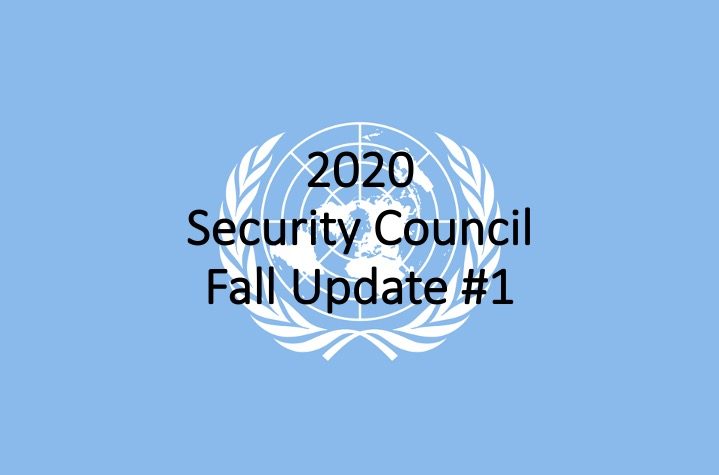
2020 Security Council Fall Update #1

This update complements the background guide already published in the AMUN Handbook. Please read the handbook before turning to this update.
The Situation in Libya
On 21 August 2020, Libya’s rival authorities announced they had reached an immediate ceasefire agreement. Parties to the ceasefire include the Tripoli-based and internationally-recognised Government of National Accord (GNA) and Aguila Saleh, speaker of the eastern-based parliament (and proxy for General Khalifa Haftar). The United Nations and President Abdul Fattah al-Sisi of Egypt, a staunch supporter of General Haftar and his government, have welcomed the agreement.
While the ceasefire had remained relatively stable, protests have been raging in eastern Libya amidst allegations of corruption in General Haftar’s allied government and what many citizens are calling “deteriorating living conditions.” Protests spread to Western Libya, Benghazi, and Tripoli, with protestors calling for political reform in both the internationally recognized Government of National Accord out of Tripoli and the Lybian House of Representatives out of Tobruk. Protests have also called for swift action to improve the worsening humanitarian situation within the country. On 15 September 2020, Prime Minister Abdallah al-Thani tendered the Eastern-based interim government’s resignation, due to mounting pressure from Libyan citizens. This move left General Haftar, who controls the Libyan National Army (LNA), without a political proxy.
On 15 September, the United Nations Security Council extended the mandate of the United Nations Mission in Libya (UNMIL) in Resolution 2542. The Council also agreed to appoint another special envoy to Libya, as the last appointee resigned from the stress of the position in March 2020. Just a few days after the Security Council took these actions, General Haftar stated that he is ready to temporarily lift his blockade of the country’s oil production facilities, which has been in place since February 2020. With most of the country’s oil fields and pipelines under the control of General Haftar and the LNA, the country’s financial situation has reached a breaking point. The Eastern forces’ blockade (see map) of oil exports has cost $9 billion in lost revenue for Libya so far this year, the central bank said this week, and has exacerbated electricity and fuel shortages in the country. As the political and financial crises rage, the humanitarian situation in the country also grows more dire by the day, with approximately 400,000 Libyans internally displaced and COVID-19 cases within the country increasing at a rapid rate.
Bibliography:
Al Jazeera (2020). “Libya’s NOC lifts force majeure on oil in ports without fighters.” 19 September.
Al Jazeera (2020). “UN chief to appoint special envoy to mediate Libya conflict.” 15 September.
Al Jazeera (2020). “Protesters set government building on fire in eastern Libya.” 13 September.
BBC News (2020). “Khalifa Haftar’s rival Libya government resigns after Benghazi protests.” 14 September.
BBC News (2020).”Libya crisis: Rival authorities announce ceasefire.” 21 August.
BBC News (2020). “Libyan strongman Haftar ‘ready’ to lift oil blockade.” 18 September.
Parvis, Salman (2020). “Prospects of normalization grim in Libya.” 18 May.
Security Council Meeting Coverage (2020). “Security Council Extends Mandate of United Nations Mission in Libya for 12 Months, Adopting Resolution 2542.” 15 September.
United Nations Africa Renewal (2020). “Ceasefire holds in Tripoli, but core problems remain, says UN Libya mission chief.”
United Nations Office for the Coordination of Humanitarian Affairs (2020). “COVID-19 Movement Restrictions: Libya Mobility Restriction Dashboard #7 (1 – 31 August 2020)”. 8 September.
Keep Up With The Accords
More to read
The AMUN Accords is a premier resource for fact-based Model United Nations simulations. We are always looking for new contributors. Want to write for the AMUN Accords? Check out out the submission guidelines and then get in touch!




